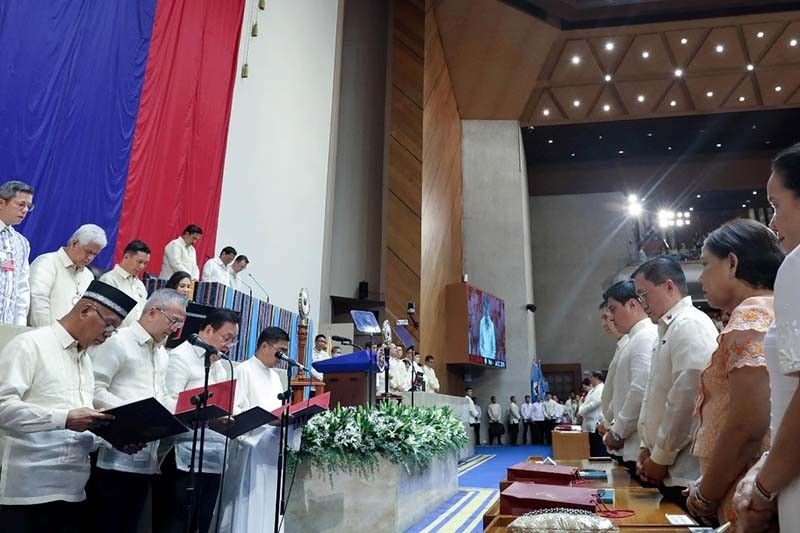The ‘designated survivor’: How does it work in real life?

MANILA, Philippines — “Designated survivor” may not just be a show on Netflix or a practice of the United States government should the bills filed in both chambers of Congress become law.
Sen. Panfilo Lacson and Rep. Precious Castelo (Quezon City) filed Senate Bill 982 and House Bill 4062, respectively, which seek to allow the president to delegate a successor from his Cabinet officials ahead of an event that brings the major players of the government together.
This usually happens whenever the chief executive delivers the annual State of the Nation Address.
Under the 1987 Constitution, the vice president is next in the line of succession in case of the president dying or becoming incapacitated. The vice president will be followed by the Senate president and the House speaker.
But there is no constitutional provision if all successors die or become permanently disabled.
Both bills proposed that the “designated survivor” would become the new president if the top four government officials die or become permanently disabled to lead the country.
“I noticed during SONA, everybody is there practically. The president, vice president, Senate president, House speaker are present. So knock on wood, for example, there’s an extremist or terrorist who will bomb Batasan and everyone dies, we won’t have a successor,” Lacson said.
Lacson’s proposed legislation also suggests including the most senior senator and the representative based on the length of service in their respective chambers, and a Cabinet member chosen by the president in the line of succession.
Inspired by fiction, US policy
In an interview Thursday, Lacson said he was “sort of” inspired by the political thriller drama “Designated Survivor.”
In the show, US Secretary of Housing and Urban Development Tom Kirkman, played by Kiefer Sutherland, became the most powerful man in the country after the US Capitol building is blown up during the State of the Union address.
Kirkman is the “designated survivor”—the Cabinet member who sits out of a major event that brings US leaders together—in case of a catastrophic attack.
But Kirkman’s character is a real one within the US government. The real-life “designated survivor” waits in a secret and secure location during big events—when all of the individuals in the line of succession are in the audience.
The “designated survivor” would be the one official to maintain continuity of the government if tragedy strikes.
The US Senate has a list of real-life “designated survivors” of every State of the Union address.
Cold War-era practice
According to a Washington Post report, the concept first arose during the Cold War amid fears the Soviet Union could wipe out the US government with a nuclear attack when all of the country’s leaders were gathered in one place such as the State of the Union or an inauguration.
“But since the terrorist attacks 15 years ago, the role has become much more serious. Cabinet members selected in recent years did not return calls asking about the experience, or they answered with a stern ‘no comment.’ Turns out, it’s a security breach to discuss any detail,” the Washington Post article said.
The United States president and his staff choose the “designated survivor.” Like the chief executive, the “designated survivor” must be at least 35 years old and a natural-born citizen.
The “designated survivor” gets presidential-level security from the US Secret Service and is brought to an undisclosed facility outside of Washington.
This policy is governed by the Presidential Succession Act, which aims to create a sequence of succession in case of the president dying or becoming incapacitated. The sequence goes: vice president, then House speaker, then Senate president pro tempore, then secretaries of state, treasury, defense, the attorney general, and the secretaries of the interior, agriculture, commerce, labor, health, human services, housing and urban development, transportation, energy, education, veterans affairs and homeland security.
Continuity of government
During and after the Cold War, countries developed their own continuity of government plans to allow or minimize confusion and disorder due to a power vacuum in case of a catastrophic event such as a nuclear attack.
Canada, Czech Republic, Denmark, Germany, Republic of Ireland, Israel, Norway and Sweden built bunkers to house government officials, members of royal families or military personnel and even civilians in case of nuclear or military attacks.
France and the United Kingdom have their own hardened command centers.
- Latest
- Trending



























